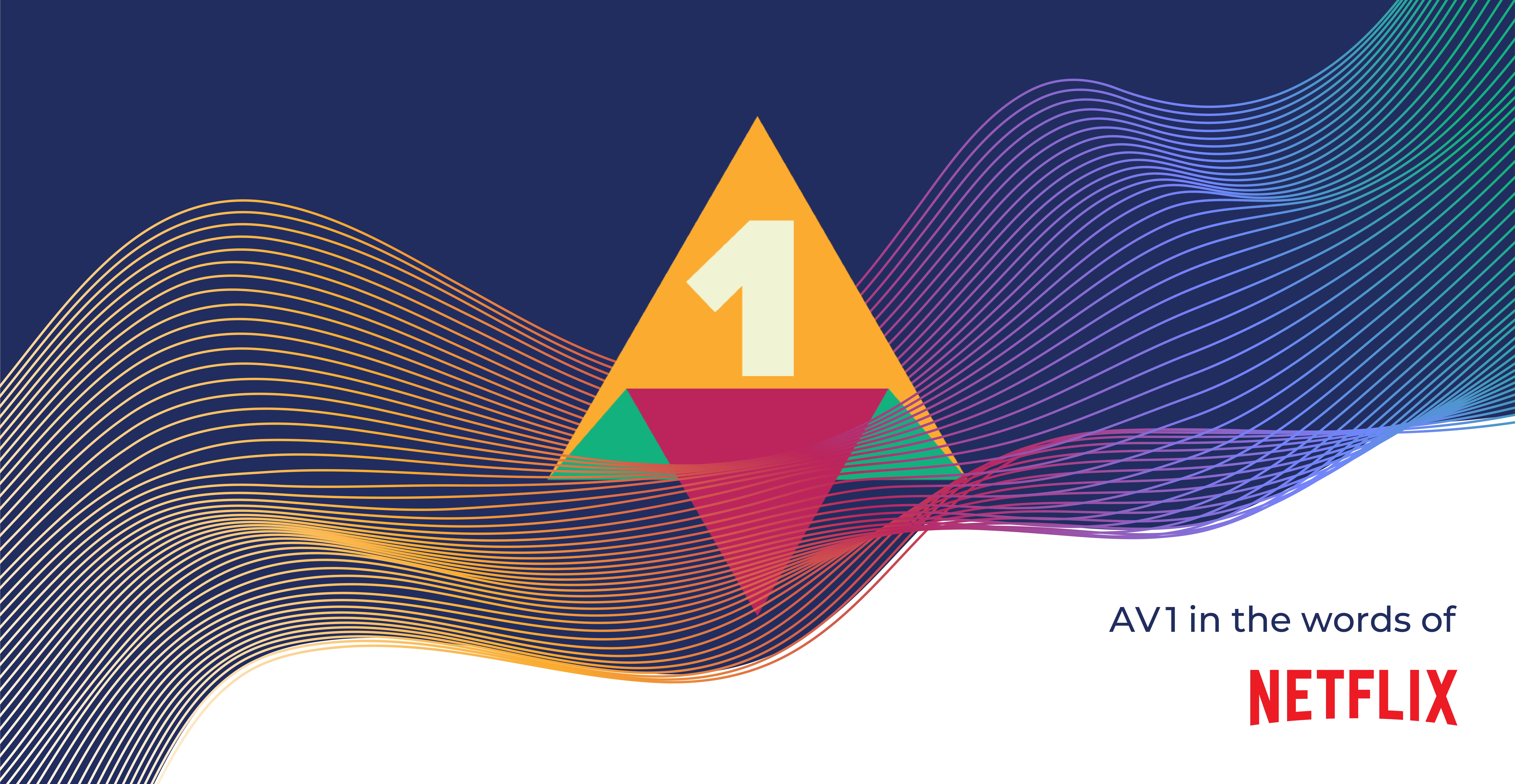AV1 at Netflix: Redefining Video Encoding for a New Era of Streaming
Netflix showed the world that movie and TV streaming could be a phenomenal success, and has achieved 17 years of industry leadership in streaming technology and 282 million paid subscribers worldwide. Netflix is also one of the earliest adopters of AV1 and continues to leverage it to deliver premium content experiences for its users. Liwei Guo, a software engineer at Netflix, played an important role in the launch of the company's AV1 streaming. He walked us through Netflix’s use of AV1.
Advantages of AV1
While there are several reasons why Netflix adopted AV1, Guo noted that the main reason is its efficient compression. “AV1 allows us to deliver high-quality video at lower bitrates. Our members may be in an unstable and highly congested network, or they may be using cellular networks and choose to have their data rate capped at a few hundred kilobits. Using AV1 not only enhances the viewing experience but also expands our reach to a broader audience.”
Elaborating on the importance of quality, Guo continued, “We are committed to preserving all the fine details in our videos, and any AV1 decoder can handle 10-bit content. The high bit depth helps deliver subtle details and minimizes the risk of banding.”
AV1 also delivers extended 4K streaming hours and greater stability under varying network conditions. “Rigorous A/B testing demonstrated AV1’s superior compression efficiency, achieving up to a 10-point VMAF score improvement in challenging conditions,” said Guo. “AV1 also reduces the bandwidth needed for 4K streaming, leading to a 5% increase in 4K viewing hours, and minimizes noticeable quality down-switches by 38%, ensuring a smoother and more enjoyable experience.”
AV1’s efficiency also reduces resource consumption of Netflix traffic. Commenting on this, Guo said, “AV1 is now Netflix’s second most-streamed format and plays a key role by shrinking stream sizes. This improvement also optimizes content placement on local edge servers, enhancing performance while easing network loads for both Netflix and our ISP partners.”
An Aid to Ongoing Innovation
Netflix embraces ongoing innovation, and AV1 plays a key role in this effort. According to Guo, "The AV1 specification includes a wide array of new encoding tools, but it is how these tools are utilized during encoding that unlocks their full potential.”
One challenging area is film grain synthesis. Directors use film grain as a creative tool, but encoding it accurately is difficult.
Guo highlights that addressing the challenges of separating grain from the rest of the video signal is crucial for enhancing the viewing experience. “This is particularly important in adaptive streaming, where multiple video resolutions are created. Ensuring seamless transitions between streams, especially regarding the grain, is critical. We have undertaken significant innovative work to make our AV1 encoding both effective and efficient, leveraging these new encoding tools to their fullest potential."
AV1 for All Industry Innovators and Devices
AV1’s ecosystem is growing to support broad adoption. Contrary to the myth that AV1 is exclusive to a few heavy hitters, it now thrives in a diverse environment. Guo notes that there are open source tools like SVT-AV1 for encoding and dav1d for decoding that make AV1 accessible to companies of all sizes. Additionally, cloud based AV1 encoding services cater to those without in-house engineering resources.
“This accessibility is also reflected in memberships of the Alliance for Open Media (AOMedia), which includes public companies with multi-trillion-dollar market caps as well as startups with one hundred or fewer employees,” said Guo.
For low-end mobile devices, while AV1 decoding can be demanding, its bandwidth efficiency provides critical benefits under challenging network conditions and data constraints. Software decoders like dav1d have made AV1 playback feasible on these devices, with Google adopting dav1d as Android’s default AV1 decoder.
“Looking ahead, hardware decoders will become standard across all mobile tiers, offering better energy efficiency and longer battery life,” said Guo. “As AV1 adoption grows, chip manufacturers will reduce costs by replacing older decoders with AV1. Netflix’s shift to AV1 streaming aims to further drive this transition.”
The ROI of AOMedia Membership
“Being part of AOMedia allows us to collaborate with leaders from both industry and academia to develop and promote open-source media compression formats,” said Guo. “This collaboration fosters a shared vision for advancing video technology, benefiting not only Netflix but the entire streaming ecosystem.”
Netflix is determined to not only explore new content types like cloud gaming and live streaming but also to give back to the industry. “Our experience delivering content at scale gives us valuable insights, which we can share through our participation in AOMedia. This collaboration allows us to contribute to the development of a format that meets diverse use cases and supports our focus on innovation and quality,” said Guo.
